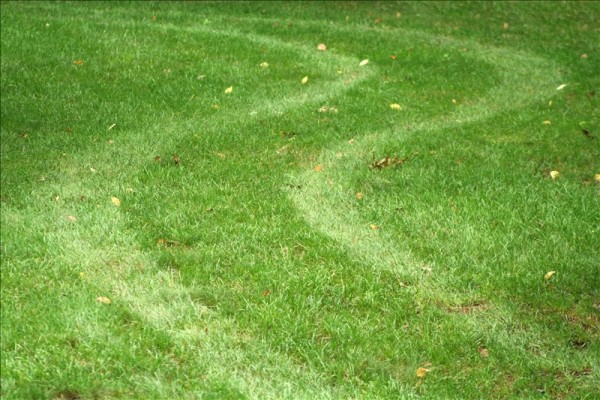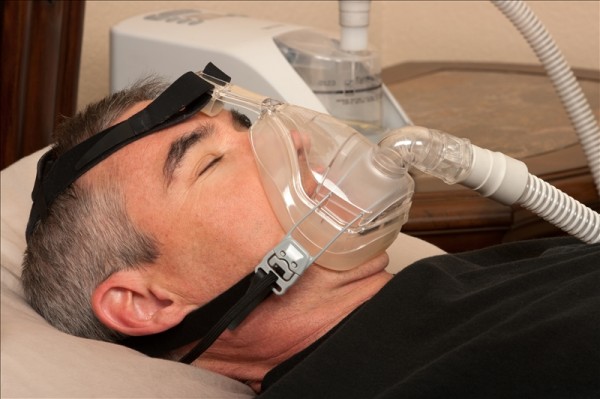I was driving along a state highway heading home on a summer afternoon. I dozed and drifted onto the gravel shoulder toward a drop-off onto someone’s lawn. The bang of my right side mirror striking a mailbox woke me up. I swerved left and skidded back into the road. Safe this time, but frightened.
Dan
Dan was often sleepy during the day. He decided to see his doctor and told him about his near-miss and some other things that had been happening lately.
- He fell asleep at night the moment he put his head on the pillow.
- Sometimes he’d wake with a start during the middle of the night.
- Many mornings he woke up tired.
- He’d often think about grabbing a nap during the day.
- He’d doze off while reading or watching TV, in waiting rooms and sometimes, during phone conversations.
- His wife often woke him up and told him to stop sleeping on his back because he was snoring.
Dan’s doctor referred him to a lung specialist, who decided that Dan might have sleep apnea.
What is sleep apnea?
If you have sleep apnea, your breathing stops and starts all through the night. It can be serious. There are three main types of sleep apnea.
Obstructive sleep apnea
Happens when throat muscles relax. It’s the most common type of sleep apnea. For a variety of reasons (see risk factors below), the muscles can relax as you breathe in and narrow or close your airway. If you can’t get your breath, the oxygen level in your blood may lower. The brain realizes what’s going on and wakes you up so you can breathe. It can happen many times all night long and when it does, you may snort or gasp. You might not remember a thing in the morning, but your body will not have had a good night’s sleep.
Central sleep apnea
Happens when the brain sends the wrong signals to the muscles that control breathing. That means your body doesn’t even try to breathe for a short period of time.
Complex sleep apnea syndrome
A combination of obstructive and central sleep apnea.
Sleep apnea risk factors
According to Martine Eon, a respiratory therapist and clinical lung specialist at MaineHealth, between three and seven percent of the population in the United States have obstructive sleep apnea. She says there are a number of risk factors:
- Age (muscle tone decreases with age)
- Being male (Men are twice as likely to have it than women)
- Obesity
- Family history
- Menopause
- Smoking
- Alcohol
- Head or facial abnormalities
- Thick neck. A thick neck may mean a narrower airway
The lung specialist Dan saw noticed that he had some of the risk factors. He was over 65, overweight, and had a thick neck.
Sleep apnea symptoms (all types)
And all of those things that Dan had been experiencing were classic symptoms of sleep apnea. Here’s a full list:
- Falling asleep immediately because you’re sleep-deprived
- Feeling tired when you first wake up and drowsy throughout the day
- Gasping, choking sensation that wakes you from sleep
- Snoring (usually more common with obstructive sleep apnea)
- Sleeping partner witnesses that you sometimes stop breathing and then snort or gasp while still sleeping
- Difficulty staying asleep
- Waking up with a dry mouth or a sore throat
- Having a morning headache
There were enough warning signs that Dan’s lung specialist decided to book him for an overnight stay at a sleep lab.
My job was to sleep as usual. The technician attached leads all over my head and body. We talked about the Red Sox as I was watching part of a game on the TV. Disappointed in our team, I lay down and went to sleep. The leads and lines bothered a little, but I could still sleep. The lab’s equipment measured every little thing overnight, including how many times and when I stopped breathing, how soundly I slept, how much I had slept on either side and my back, and what went on with my heart.
Treating sleep apnea
Sure enough, Dan was diagnosed with obstructive sleep apnea. Sometimes, the only treatment needed are some lifestyle changes.
- Lose extra weight
- Quit smoking
- Avoid alcohol and medications that may relax muscles in the back of the throat
- Get regular exercise
Dan was advised to use a CPAP (continuous positive air pressure) machine all night every night. It can be used to treat obstructive and central sleep apnea.
I use a little mask with a cushion over my nose to accept some lightly pressured regular air that keeps my airways open. The machine wirelessly transmits info to the medical practice and also records detail on an attached card.
If the CPAP doesn’t work, other devices are also available. Some cases of sleep apnea have to be treated surgically. Dan has been using his CPAP machine every night for a few years now with no problems. It’s made a big difference for him.
I don’t breathe through my mouth at night any more. I don’t snore. I don’t wake up startled at night and I usually don’t wake up tired in the morning. I do not fall asleep involuntarily during the day, but I do choose to nap in a lounge chair sometimes. That goes fine without the machine. I am also more attentive, more energetic, and less crabby during the day.
Early on, he got proof that if he doesn’t use the machine, he’s right back where he started.
I made the mistake of not preordering some of the equipment that needs regular replacement. I went a week without using the machine. I woke up each morning feeling I wanted to go back to bed. I was fuzzy-headed and grumpy. I had not slept without it for more than one or two nights since starting over a year ago. Going back to positive pressure breathing has done wonders for my mood, clarity, and alertness.
If you suspect you might have sleep apnea, it’s important to get it checked out. Like Dan, you may need to see a sleep specialist and have a sleep study to get a proper diagnosis.



I started using a CPAP over two years ago and can’t imagine not having it. I used to wake up gasping for air and feeling like I wasn’t going to take another breath. I was exhausted all the time and didn’t understand why I felt so physically drained. I went through two sleep studies and very quickly was provided with my CPAP. I feel like a new woman. To anyone who has any of the above named symptoms, please, please, please get yourself checked out.
Hi Pam! What a terrifying feeling that must have been. I’m glad you figured out what was wrong. Thank you for taking the time to write a comment. It was good to hear from you.
Diane,
Thank you for helping share pubic education about the dangers of obstructive sleep apnea (OSA). Not only are there dramatic consequences, such as the gentleman reported in your article, but there also the hidden costs of job loss due to falling asleep at work, taking too much sick time and associated personal stigma.
In my case, I’d lost two jobs and experienced three head traumas over 5 years (or more) before my sleep apnea was finally diagnosed at 51 y/o and following my sleep study. Before that I couldn’t explain my symptoms and thought I must be developing mental health symptoms, or had simply become lazy and or developed memory and concentration problems at work. My sleep doctor explained my symptoms were due to the enormous REM-sleep deficit and brain oxygen deprivation that had been accumulating for years in myself and other OSA patients.
Thank you, again, Diane, for helping spread the word!
Another great piece on sleep apnea! Loved hearing about Dan. So glad you told his story… similar to mine when I fell asleep because of sleep apnea. I’m glad he was ok. 80% of those that have it don’t realize they do. This article will help so many people. You’re saving lives. Great job, love your work.